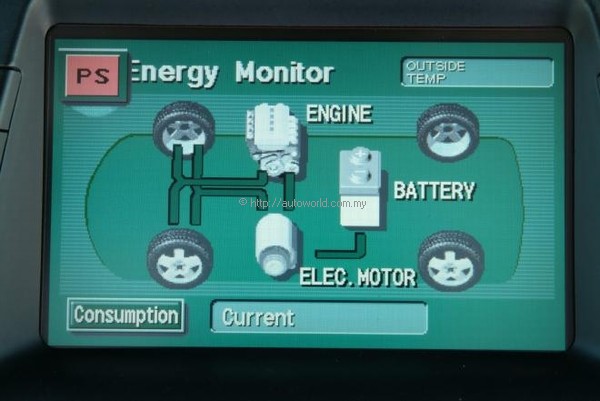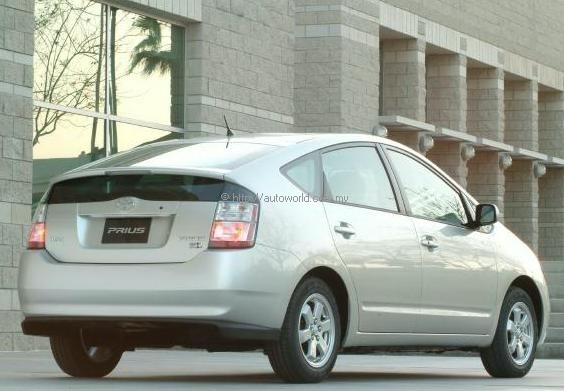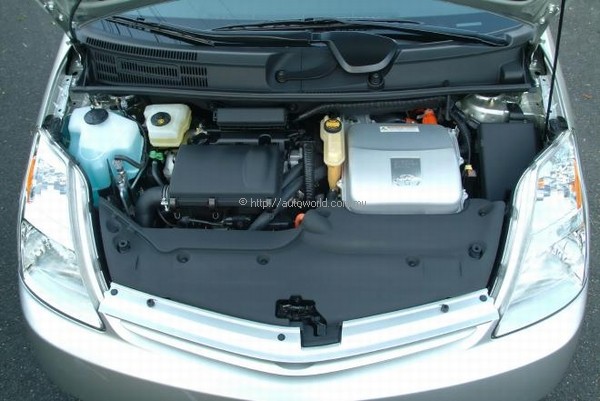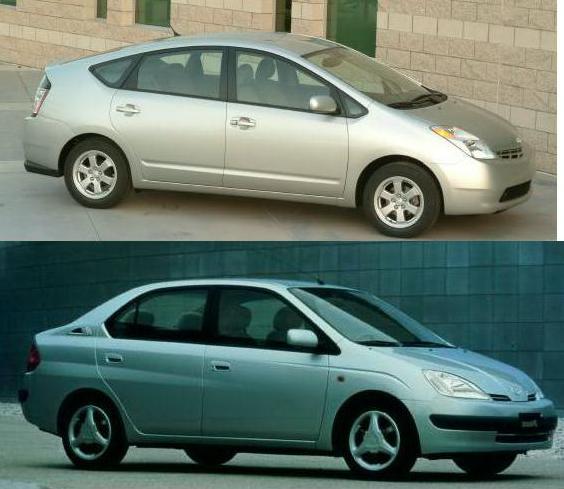The 2nd Generation Toyota Prius
Back in the 1990s, Toyota’s then-president Hiroshi Okuda believed that mere talk about being an eco-friendly company was not enough to demonstrate the company’s commitment to protect the environment. To show just how serious Toyota was, he initiated a project to develop and commercialise an entirely new powerplant for cars – the Toyota Hybrid System (THS).
The development of the THS was virtually restriction-free – unlike other models, the project team did not have to use existing components – but it had to be effective enough and commercially viable, although analysts suspected (initially) that Toyota was subsidising the cost of producing the hybrid car that came to be known as the Prius.
Nevertheless, a strong push by Toyota, initially in Japan and then the USA, saw sales of the Prius increasing. Today, over 110,000 units have been sold worldwide, making it the best-selling hybrid car in the world.
Many lessons have been learnt in the past six years as the Prius was used in real-world conditions. For example, it was found that the higher cruising speeds in the US, compared to Japan, required a different operating strategy for the powerplant. This requirement led to an increase in performance: an engineering update in 2000 resulted in 19% more power (to 53 kW) and 13% more torque (to 115 Nm) whilst the electric motor’s output was also improved to 33 kW and 350 Nm.
In order to popularise the hybrid technology – admittedly an interim solution – Toyota has even been willing to share the THS technology with other manufacturers and has signed an agreement with Nissan to supply hybrid system components and collaborate in various areas.
Now comes the second generation which is claimed to be better in every metric of comparison. It is a bigger car and it also has a new powerplant – the Hybrid Synergy Drive system which is the concept for the second generation of THS (THS-II).
 |
The Hybrid Synergy Drive is defined as a “full hybrid system.” Unlike competitive systems currently on the market, the full hybrid system is capable of operating in either petrol or electric modes, as well as a mode in which both the petrol engine and electric motor are in operation.
The concept of Hybrid Synergy Drive gives the electric motor a more important role when powering the vehicle both for fuel efficiency or peak performance, intensifying the synergy between electric and petrol power. The electric motor will be much more powerful than before, which means the petrol engine will be less used. As the electric motor is much more efficient than the petrol unit, this will also be translated into better fuel economy, in spite of the improved performance.
Globally, the new generation of Toyota hybrid systems based on this new philosophy will rely on more powerful petrol and electric power sources in order to achieve higher levels of performance. Thanks to this, hybrid vehicles will no longer be perceived as dull and boring, but will deliver driving dynamics to compete head-to-head with conventional cars from equivalent segments or even above.
The excellence in driving dynamics won’t be translated solely on basic performance figures, but also on other areas like smoothness, silent operation and linear acceleration, chapters in which normal internal combustion engines will have many difficulties in keeping up with this new generation of hybrid systems.
The THS II hybrid system represents a clear evolution in several directions. Unlike conventional systems in which a low-output motor temporarily boosts driving performance, the new system uses the Hybrid Synergy Drive concept which seeks greater synergy between enhanced motor power and the engine for an exciting hybrid vehicle driving experience, as well as unparalleled fuel efficiency.
The new hybrid system has evolved from the original Toyota hybrid system (THS) in the following areas:
– 1.5 times greater electric motor power (50 kW/68 hp at between 1040 – 5600 rpm) and 8% more petrol engine power (57 kW/78 hp at 5000 rpm) for better performance;
– noticeable increase in the usage ratio of the electric motor for improved efficiency;
– high voltage electric supply circuit for superior power and minimised electrical losses; and
– Newly developed battery pack, with superior output density and improved charge/discharge capacity.
Thus THS II relies on a more powerful petrol engine and a super-performance electric motor to deliver a level of performance that can qualify Prius as a top contender in the midsized segment, despite being equipped with a small 1.5-litre petrol engine. However, the ultra-efficient electric motor is now more powerful than most 1.0 to 1.2-litre internal combustion engines in the market and features an amount of torque (400 Nm) which is enough to surpass the values produced by V6 diesels.
However, pure performance is not the only thing THS II has to offer. Thanks to the advanced control system and the use of the electric motor as the main power source, the hybrid powertrain displays a high level of smoothness, especially when driving on EV mode. Again, thanks to the efficient Toyota electric motor, the acceleration is powerful but linear, especially in the 50-80 km/h range, not subjected to the normal fluctuations of a conventional powertrain. In terms of noise and vibration, the hybrid powertrain is claimed to beat most internal combustion engines in the market, especially diesel competitors.
A major difference between the Hybrid Synergy Drive concept, and how it is improved over the current THS system centres on the duration of electric-mode driving and the peak power delivered electrically. The Hybrid Synergy Drive has a 50% more powerful 50-kW drive-motor operating at up to 500 volts. This increased voltage and power is enabled by a newly-adopted high-voltage power converter.
 |
Additionally, the generator in the new Prius has a higher peak operating speed that increases electric-mode operation in city and freeway slow-and-go operation. With 50 percent more electric power available and improved low-end torque from the drive motor, a significant boost in acceleration performance is possible. As a result, the new generation Toyota Prius displays a comfortable increment in top speed and a 0-100 km/h acceleration said to be below 11 seconds, making it almost 3 seconds quicker than the current generation car. This value is comparable with a conventional 2.0-litre engine.
The Hybrid Synergy Drive is expected to increase fuel efficiency in the new Prius by 15% with combined mpg rising from the high 40’s to the mid-50’s (US mpg).
Finally, the Hybrid Synergy Drive has nearly 30% lower emissions than the current Prius, producing nearly 90% fewer tailpipe pollutants than a conventional internal combustion engine. In the US market, it can qualify as a SULEV, or “Super-Ultra-Low-Emission-Vehicle” for tailpipe emissions in California and those states adopting California standards.
continued on page 2






























